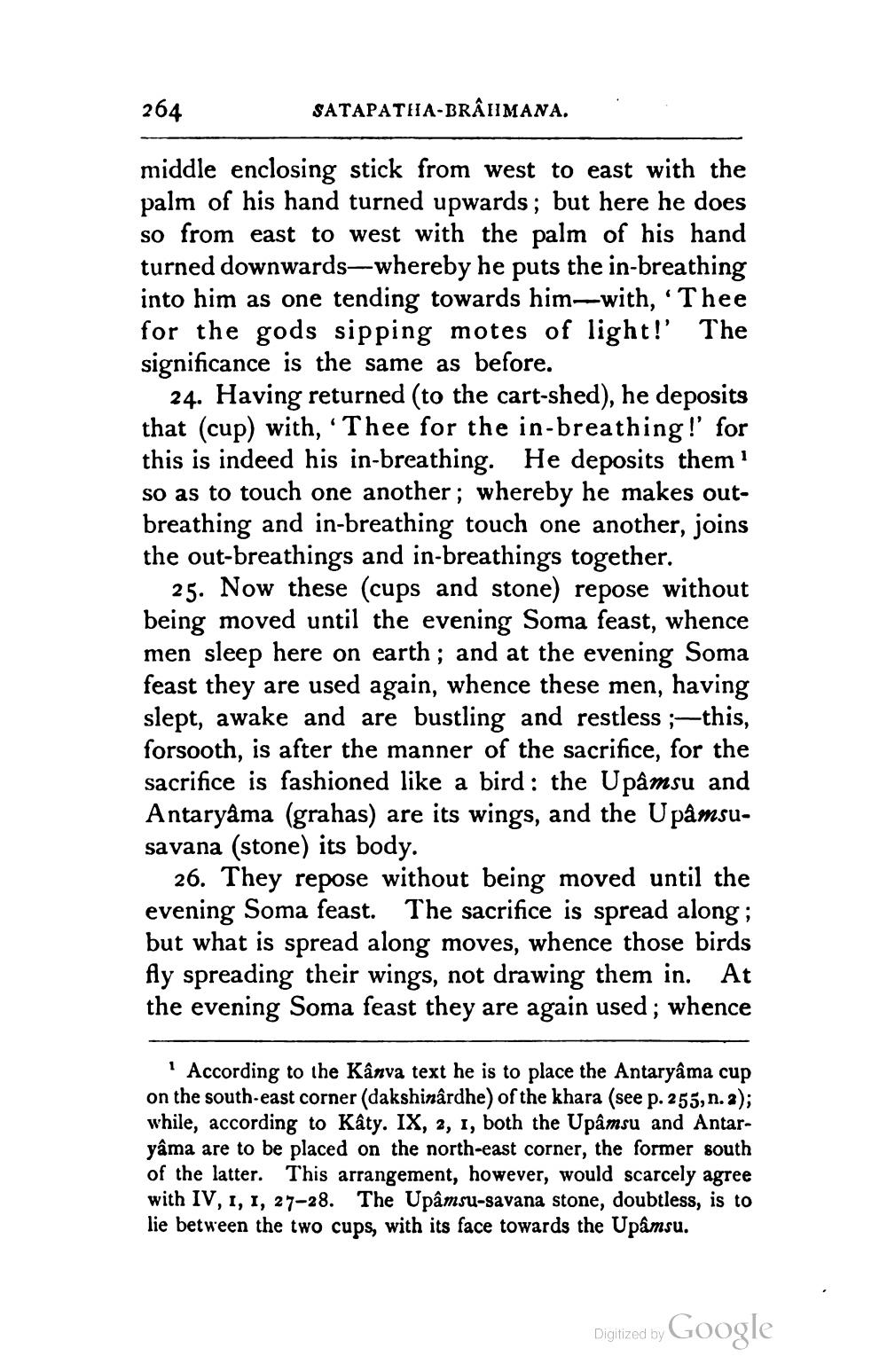________________
264
SATAPATHA-BRÂUMANA.
middle enclosing stick from west to east with the palm of his hand turned upwards; but here he does so from east to west with the palm of his hand turned downwards—whereby he puts the in-breathing into him as one tending towards him with, 'Thee for the gods sipping motes of light!' The significance is the same as before.
24. Having returned (to the cart-shed), he deposits that (cup) with, 'Thee for the in-breathing !' for this is indeed his in-breathing. He deposits them! so as to touch one another; whereby he makes outbreathing and in-breathing touch one another, joins the out-breathings and in-breathings together.
25. Now these (cups and stone) repose without being moved until the evening Soma feast, whence men sleep here on earth; and at the evening Soma feast they are used again, whence these men, having slept, awake and are bustling and restless ;—this, forsooth, is after the manner of the sacrifice, for the sacrifice is fashioned like a bird : the Upâmsu and Antaryâma (grahas) are its wings, and the Upåmsusavana (stone) its body.
26. They repose without being moved until the evening Soma feast. The sacrifice is spread along; but what is spread along moves, whence those birds Ay spreading their wings, not drawing them in. At the evening Soma feast they are again used; whence
According to the Kânva text he is to place the Antaryâma cup on the south-east corner (dakshinârdhe) of the khara (see p. 255, n. 2); while, according to Kâty. IX, 2, 1, both the Upâmsu and Antaryama are to be placed on the north-east corner, the former south of the latter. This arrangement, however, would scarcely agree with IV, 1, 1, 27-28. The Upâmsu-savana stone, doubtless, is to lie between the two cups, with its face towards the Upamsu.
Digitized by Google




